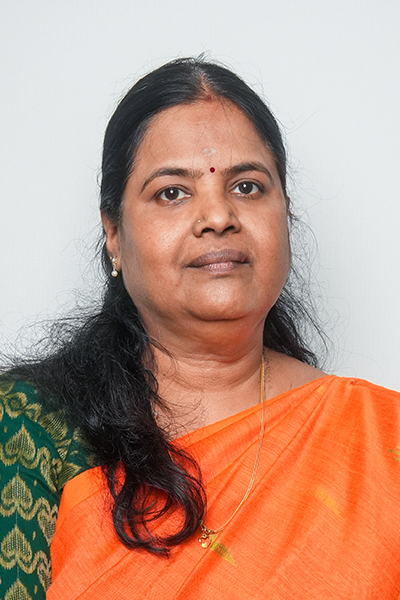Bio
Cytogenetics laboratory
Clinical Cytogeneticist with 23 years of experience and has a distinguished career in research and teaching, particularly in the areas of Radiation Biology and have conducted ground-breaking research in chromosomal aberrations and radiation response. My research journey began with a strong focus on cytogenetics, which has led to contribute significantly towards several high-impact projects, both as a principal investigator and co-investigator. Throughout my career, I have been actively involved in research, publishing articles and contributing to advancements in the field of Genetics. I have successfully completed several funded projects funded by DRDO, Delhi and currently working on a project funded by DAE-BRNS.
I am Associate Professor at the department of Human Genetics, involved in teaching Undergraduates, Post graduates and internship students. Part of a genetics diagnostic team with technical expertise on Cytogenetics I have trained academician and students on karyotyping. Research Domain is on Clinical Cytogenetics, Biodosimetry and Reproductive Genetics.
Projects
Comparison of dose response curve of 60 Co, gamma X-ray induced cytogenetic markers (Manual/Automation)- DAE BRNS funded project Major (On-going)
Abstract: The signatures left behind by ionizing radiation on the DNA and chromosome as it traverses through the cells are excellent stable indicators of radiation absorbed dose. The accepted unstable and stable aberration among chromosomal aberrations (CA) is the dicentric and translocation analysis for radiation dosimetry. Of the various biological indicators, dicentrics in the blood lymphocytes of exposed individuals are used for dose estimation and are considered to be the “Gold standard”, because of its sensitivity and specificity. Dicentric assay is applied to investigate radiation exposure, despite being very labor-intensive, time-consuming, and well-trained scorers to interpret the results; this technique involves the identification of centromeres and structure of solid-stained chromosomes and the enumeration of dicentric chromosomes in a large number of first division metaphases of cultured T lymphocytes. The dicentric yield is used to estimate the radiation exposure dosage according to an experimentally derived and predetermined dose response curve by in vitro methods. Apart from this, Giemsa-Trypsin-Giemsa (GTG) Banding that started way back in 1970s is still considered as “gold standard” for all diagnostic cytogenetic techniques. It is an approach in which each chromosome has its definite land marks on them to enable one to classify the chromosome as per the international classification.
Manual scoring of DCA is feasible only when small number of people is exposed to radiation. High throughput biological dosimetry techniques are required in order to rapidly identify individuals who require medical intervention during mass casualty scenarios of radiation exposure. Currently, automated imaging systems are attractive for scoringdicentrics because they reduce the necessary time in triage medical management. To interpret the dicentric score in terms of absorbed dose, a calibration curve is required for each laboratory to estimate the dose accurately.
Consequently, there is a need for fast and reliable tools to estimate the actual absorbed dose of potentially exposed individuals. The application of the high-through put equipment will help to analyze the CAs, including dicentrics, with a level of accuracy. This new approach can be used for biological dosimetry in medical management of radiation emergency, triage application and accurate detection of dicentrics. Such exercise is also expected to help give input for further improvements in software training of classifiers for detection of both metaphases and dicentrics.
The dose from ionizing radiation exposure can be interpolated from a calibration curve fit to the frequency of dicentric chromosomes (DCs) at multiple doses. As DC counts are manually determined, there is an acute need for accurate, fully automated biodosimetry calibration curve generation and analysis of exposed samples. The Automated Dicentric Chromosome Identifier (ADCI), Software is presented which detects and discriminates DCs from monocentric chromosomes, computes biodosimetry calibration curves and estimates radiation dose. Therefore, ADCI can determine radiation dose with accuracies comparable to standard triage biodosimetry. Calibration curves generated from metaphase images with ADCI may be an effective response to a mass casualty radiation event.
Therefore, the present study will be aimed to find the frequency of dicentric in peripheral blood lymphocytes using chromosomal aberration assay (CA), to identify and capture various type of stable and unstable aberrations using GTG-banded chromosomes following exposure of cells to ionizing radiation; to construct a DC curve using manual and automated scoring-also to elucidate the correlation between the various dose response curves obtained by the two techniques to find out the accuracy.

